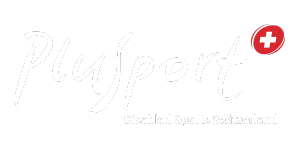Scrum is considered the most widely used agile framework. However, in many companies, it is applied not as a flexible framework but as a rigid process with numerous ceremonies. The result is often anything but agile: instead of rapid adaptability and customer value, processes, meetings, and tools take center stage. In this post, I want to highlight the typical problems of dysfunctional Scrum and explain how Lean Software Development by Mary Poppendieck can help restore true agility.
Symptoms of Dysfunctional Scrum
Many teams do not experience Scrum as liberating but as a constraining framework. Typical signs of dysfunctional Scrum include:
- Meetings for the Sake of Meetings
- Daily stand-ups turn into lengthy status updates instead of short, focused synchronizations.
- Retrospectives become mandatory rituals without leading to real improvements.
- Sprint Planning as a Mini-Waterfall
- Teams try to plan every detail for the entire sprint, leading to a loss of flexibility.
- Backlogs are planned down to the smallest detail instead of being iteratively adjusted.
- Too Much Process, Too Little Self-Organization
- Teams are not allowed to make autonomous decisions but must follow rigid rules.
- Adaptations to their own ways of working are not permitted because “Scrum dictates it.”
- Product Owner as a Backlog Manager Instead of a Visionary
- Instead of shaping product vision and strategy, the Product Owner merely manages tickets.
- User feedback is often ignored because the backlog is seen as a fixed to-do list.
- Velocity Pressure and Misguided KPIs
- The focus is on story points rather than real customer value.
- Teams are measured by how much they deliver, not by the value they create.
Lean Software Development as an Alternative
Lean Software Development, shaped by Mary and Tom Poppendieck, offers an alternative approach to truly embracing agility. The following principles are central:
- Maximize Value, Eliminate Waste
- Focus on customer value instead of rigid processes.
- Use meetings, documentation, and rules only where they add real value.
- Fast Deliveries and Continuous Feedback
- Small, incremental releases instead of large sprints with fixed scopes.
- Constant feedback loops with real users.
- Autonomous, Self-Organized Teams
- Teams have decision-making power over processes, tools, and priorities.
- The focus is on team responsibility, not rigid roles.
- Integrate Quality into the Process
- Automation and continuous integration prevent technical debt.
- Development and operations work closely together (DevOps mindset).
- Respect for People
- Teams are not driven by story points and velocity but by outcomes.
- Trust and self-responsibility are at the core.
Conclusion: Strip Scrum Down, Embrace Lean
Scrum does not have to be a rigid framework. When companies focus on agile principles rather than rigid processes, Scrum can fulfill its original purpose again. Lean Software Development provides valuable impulses to refocus on customer value, flexibility, and true agility.
The most important insight: Being agile is more important than doing agile.



